CSMVS' ambitious project to take the museum to interior Maharashtra rolls today. Here's the first look of the Museum on Wheels
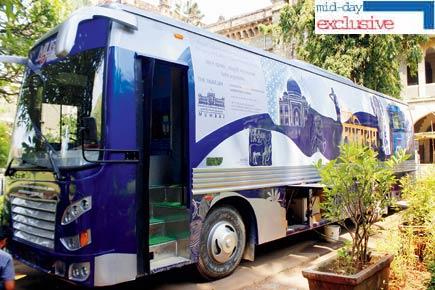
 Mumbai's principle museum, the Chhatrapati Shivaji Maharaj Vastu Sangrahalaya (CSMVS) has figured a way of being in more than one place at a time. Starting today, visitors in areas that sit on the outskirts of Mumbai, and pockets of interior Maharashtra will be treated to exhibits from the museum in a special project titled, Museum on Wheels.
Mumbai's principle museum, the Chhatrapati Shivaji Maharaj Vastu Sangrahalaya (CSMVS) has figured a way of being in more than one place at a time. Starting today, visitors in areas that sit on the outskirts of Mumbai, and pockets of interior Maharashtra will be treated to exhibits from the museum in a special project titled, Museum on Wheels.
ADVERTISEMENT
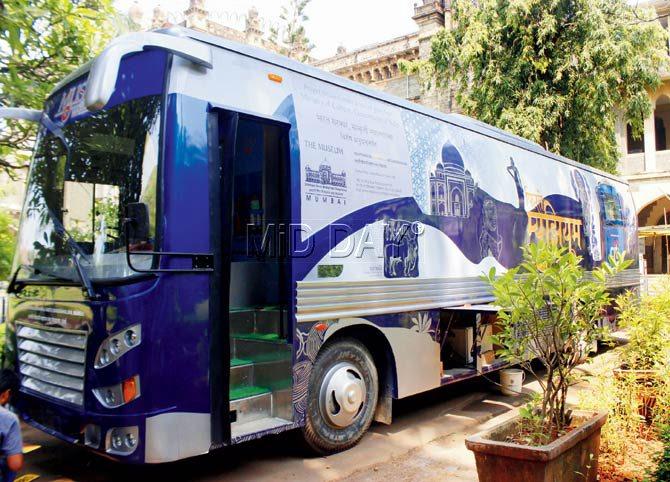
The air conditioned museum bus can accommodate 15 people at one go. Pics/Tushar Satam
Conceived almost two years ago, the bus that carries within it a free-to-all multi-media exhibit on the Indus Valley Civilisation is the museum's attempt to attract newer audiences, including those who can't make it to its South Mumbai address.
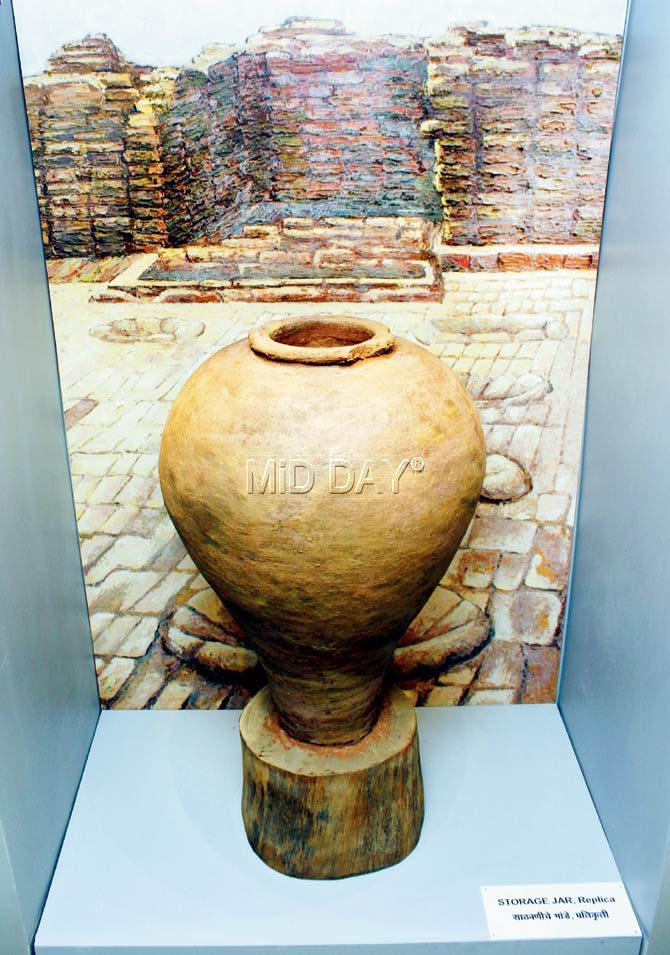
The replica of a storage jar
Helmed by the museum's director general, Sabyasachi Mukherjee, the ambitious project put together at an approximate cost of Rs 1.40 cr was supported by the Ministry of Culture, Government of India, via a special grant and with significant additional support for educational and operational activities provided by Citibank.
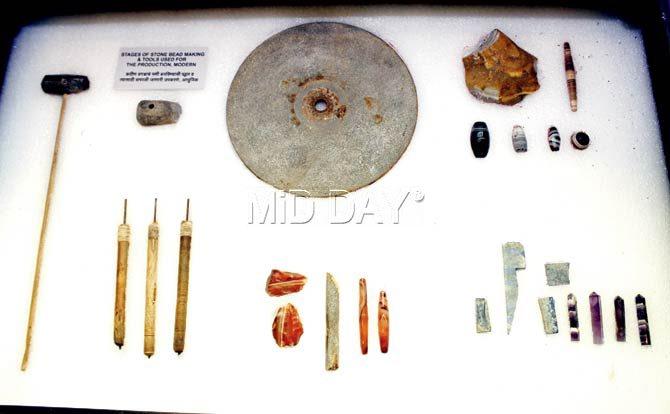
An important aspect of the exhibition is actual pieces found at sites
Its first destination is Mulla Baug on Ghodbunder Road, Thane, following which it sets off on a state-wide journey, which includes spots such as Igatpuri and a tribal school near Lonavla. The museum says it has received encouraging response from schools it had written to in a bid to collaborate and block parking slots where the bus will stand.

Replicas of Harappan civilisation art pieces which can be touched by visitors
What to expect?
On Monday afternoon, a day before the bus was readying for a trial run along Mumbai's outskirts, members of the museum staff were hard at work, lending finishing touches to their baby, down to the last detail — sourcing a garland for the inauguration today and stocking bags of clay in the storage compartments to offer visitors participating in planned activities.

The exhibition is themed on the Indus Valley Civilisation
Indus Valley is the first, they say, of several exhibitions they hope to helm and tour with. Natural history, toys and games of India, a look at hunar or skill through the ages, and textiles are some of the future themes they will be considering.
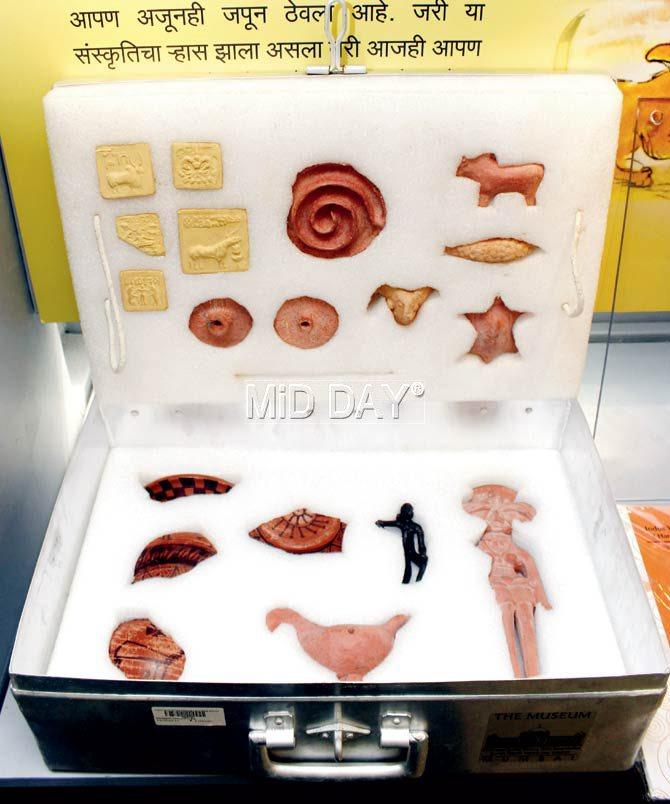
Educationists can buy the school kit curated by the museum that includes clay pieces, charts and a CD of the documentary on the subject
"We selected Indus Valley because children are familiar with the subject from their school textbooks. The exhibit hopes to showcase the origins of the civilisation, its expansion, its art and proof of trade with Mesopotamia and Babylon," says Mukherjee.
The displays that sit within the bus include replicas of various finds discovered across Indus Valley sites and dioramas to help describe the architecture of a site. Its multi-media arm includes a documentary and interactive programmes the kids can experience on tablets available inside.
But the showstoppers are original pieces from the museum's collection dating back thousands of years. And the museum is keen that kids use all their senses, while being allowed to touch and feel the exhibits. "We have had children touch exhibits at the museum, albeit under supervision, earlier too. There was never an issue," smiles Mukherjee about delicate archaeological finds. Some of these include tools used for making beads and metal statues.
All aboard
Mukherjee is particularly keen that the technology used in a civilisation that thrived between 3300 and 1700 BC, be revealed to our youth. “If you see their brick making technique, you realise it continues to be in practice. The technology they used to make beads is still in practice in Khambhat (Gujarat),” says Bilwa Kulkarni, education officer, who, along with education facilitators from the museum will guide visitors through the exhibition.
Knowledge for all
While tablets and a flat screen playing the documentary will thrill millennial babies, the team has a host of activities lined up for visitors, both young and old. “On Day one at the Thane site, we will guide children to make their own clay seals with the help of different moulds,” says Kulkarni, whose team has developed kits ('3,000) that schools can carry away with them, holding replica pieces, charts and a CD of the documentary to use later as teaching aids.
 Subscribe today by clicking the link and stay updated with the latest news!" Click here!
Subscribe today by clicking the link and stay updated with the latest news!" Click here!






